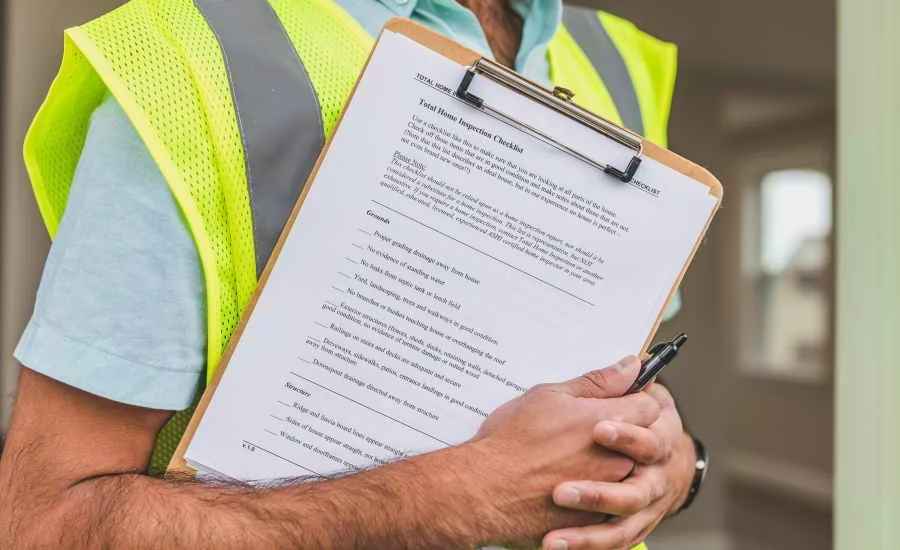Passing an OSHA Inspection in 2023

Photo by RODNAE Productions.
It is a fundamental right of every employee to be safe in the workplace, and for more than 50 years, the Occupational Safety Health Administration has issued rules and guidelines, generally referred to as “standards,” intended to improve workplace safety.
Employer compliance with these standards is enforced through OSHA workplace inspections and audits. The agency conducts thousands each year and the inspections and audits serve as the primary process whereby OSHA identifies safety hazards and unsafe practices in workplaces.
Within days of being sworn in, President Joe Biden directed OSHA to double the number of compliance safety and health officers (CSHOs) and increase safety audits across the country. The COVID-related government shutdown and employee furloughs delayed his directive from full implementation. Employers should therefore expect unannounced OSHA audits to increase in the coming months as this directive continues in force.
Preparing For an Inspection
While employers may have no control over why or when an OSHA inspection occurs, they have a great deal of control over its results. Internal company safety audits are not mandated under OSHA regulations. However, such audits are among the best steps employers can take to prepare for an OSHA inspection. Self-audits permit the company to identify and address workplace safety hazards or unsafe practices long before OSHA makes an appearance. Thorough, wall-to-wall safety reviews should be conducted at least once a year. Monthly safety committee meetings can also help employees maintain focus on keeping their workplace safe.
Ensuring that deficiencies and hazardous conditions uncovered by these self-audits have been corrected is a critical next step. In addition, confirm that required OSHA posters are conspicuously posted, and that OSHA 300 logs, 300A summaries, and 301 incident reports are all current. This helps you avoid common recordkeeping violations uncovered during audits.
Similarly, maintaining and keeping current training logs, equipment inspection records, and health/safety policies permits a complete response to routine document request made by a CSHO during an audit.
The Inspection
OSHA audits begin with an opening conference where the CSHO provides the reason and scope of the audit. This is also when the CSHO is likely to request relevant safety documents, including the 300 log, Form 300A and Form 301 previously mentioned. Other documents may also be requested at this time, such as any written safety programs, notes on employee safety trainings, and a list of the chemicals kept on-site. Prior self-audit reports are also routinely requested by the CSHO. All persons involved in the inspection should be in attendance, including any employees that may participate on behalf of the employer and the union, if one represents the employees.
If the inspection is in response to a workplace injury, the CSHO will request documents related to the injury, including the incident report, witness statements, and safety policies. If any equipment or machinery was involved, documents related to the equipment, such as maintenance records and the relevant lock out/tag out procedures will also be requested. Accident investigations are often conducted at the direction of legal counsel, which could make resulting reports privileged materials. Providing these reports to a CSHO without the specific direction of counsel could void any privilege that might otherwise apply.
Once the physical inspection begins, a management representative should accompany the CSHO at all times. If the inspection is in response to an accident, the employer representative should restrict the review to that work area and relevant equipment. The CSHO may object, but an employer is within its rights to limit the inspection. If the CSHO insists on inspecting other work areas, it may be advantageous to an employer to permit it, rather than be viewed as uncooperative, assuming the employer’s self-audits have ensured a safe and compliant workplace.
Employee Interviews
Most OSHA workplace inspections include employee interviews. Employers are permitted to, and should, prepare employees for potential interviews. Employees should also be informed that they can refuse to speak with the CSHO. However, employers may not direct employees to refuse to speak with the CSHO. Failure to prepare employees could lead to imprecise statements or admissions by employees who may not understand the significance of the process.
Management representatives are not permitted to sit in during employee interviews, but management witnesses may have company counsel present. Employers should advise all witnesses they are not obligated to sign any statement prepared by the CSHO. If they do, they should request a copy.
The Closing Conference
At the conclusion of the on-site inspection, the CSHO will hold a closing conference with the employer representatives. The CSHO normally explains his findings and any proposed citations and potential penalties. Management representatives should request the factual basis for any proposed citations during the closing conference. If the CSHO misunderstood any facts surrounding an incident or reached unfounded conclusions, the employer should make the necessary clarifications at the closing conference. If the CSHO identified any condition or practice that poses an imminent danger to employees, the employer should take the necessary steps to abate the hazard if it has not already been addressed during the inspection.
Appeal of Citations
An employer has 15 working days to file a written contest or appeal of any citation issued. The citation and any associated penalties become a final order if not contested within these 15 days. An employer may also, and should, request an informal conference with the OSHA area director. It is not uncommon for proposed monetary penalties to be reduced as the result of such a conference. However, such conferences do not extend the 15-day appeal deadline.
By regularly giving workplace safety the attention it deserves, an employer will be well positioned to successfully weather an OSHA workplace inspection. More importantly, it will help ensure that the employer provides a safe working environment for employees.
Looking for a reprint of this article?
From high-res PDFs to custom plaques, order your copy today!








